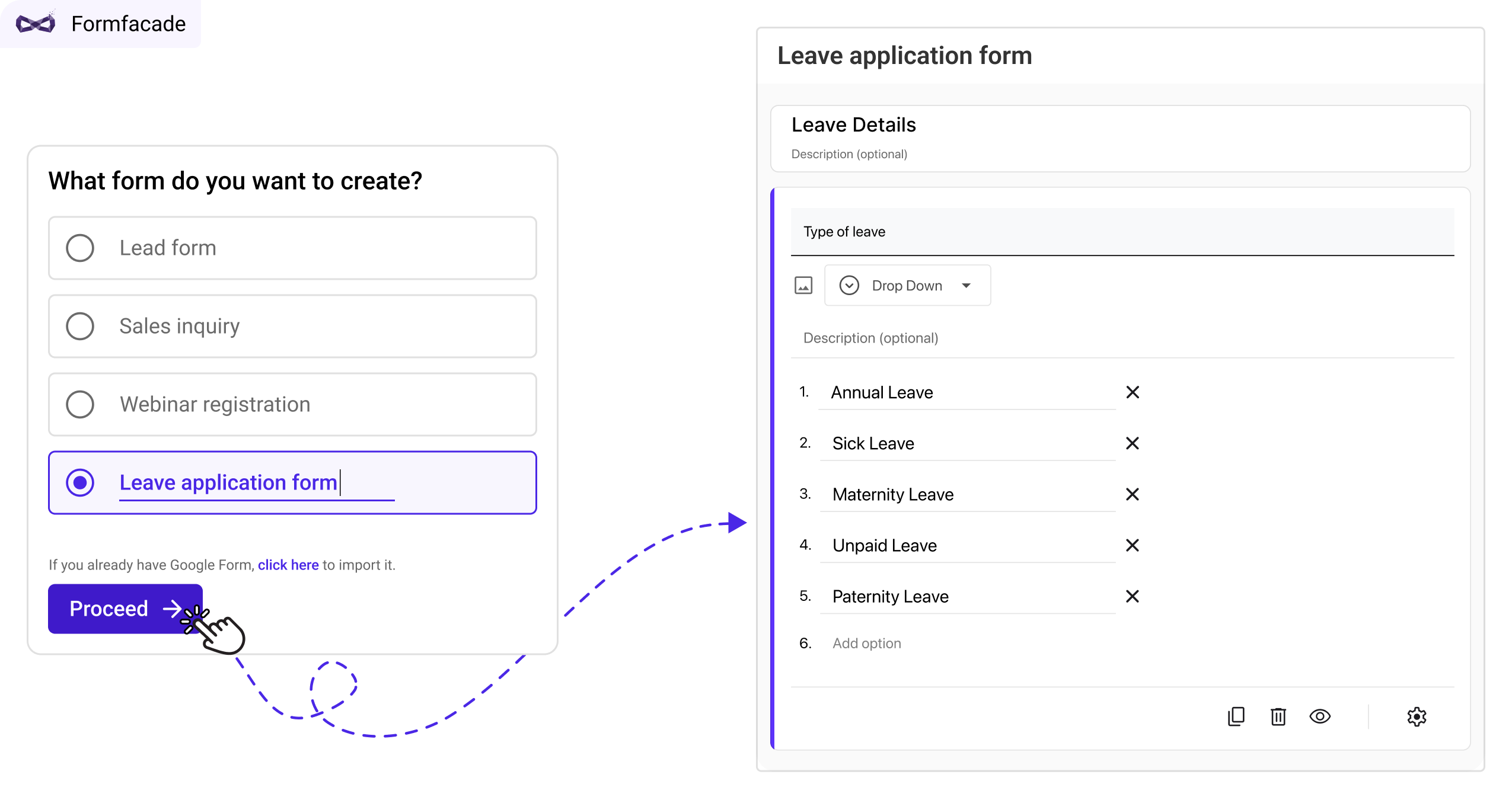When you create a leave application form using Google Forms, you notice how effortless it is to add fields, one by one. However, with an AI-enabled form builder like Formfacade, the form is generated automatically as soon as you enter the title “leave application form.” This marks a fundamental shift in how products are being built. Instead of simplifying form creation on a blank canvas, products are now pre-creating forms, giving users a tailored starting point.

Prompting will replace templates in B2B products
In the past, products like Google Forms addressed form creation by offering a variety of templates. Due to the wide range of user needs, many of these templates were crowdsourced from users, leading to inconsistent quality and difficulty in finding the right one. In the future, products will use a handful of base templates as a “seed” for AI to generate customized templates for each user. At Formfacade, we use Promptrepo to create AI model from our pre-existing form templates. This model is used to pre-create form automatically when the user enters a form title.
This shift fundamentally changes the onboarding experience. The focus will no longer be on teaching users to add fields to a blank canvas. Instead, products will make it easy to edit pre-created forms (e.g., "Add final polish" in ChatGPT 4o with canvas). In both scenarios—form title during creation and form fields during editing—the form itself acts as the prompt, rather than relying on user-entered prompt as seen in many AI-enabled apps today. This change applies not only to form builders but also to other platforms, from Canva to WordPress. Eventually, these products will be redesigned—or replaced—by new solutions that offer pre-filled canvas ready for editing, rather than blank slates requiring manual setup.
Agents will replace integration in consumer products
While prompting helps prefill information within a single app, AI agents will work across multiple apps to prefill information. Consider planning a trip to attend a conference. Typically, you would need to interact with separate apps for booking the conference, airline tickets, and hotel accommodations. In the past, integrations were built between each of these applications to avoid reentering the same information. In an AI-enabled future, agents will work across these platforms based on a single input, dynamically building the necessary integration between user-facing apps on the fly.
AI agents will handle multiple applications behind the scenes, allowing you to interact through one interface. This seamless, cross-platform experience could unfold over multiple days, with a single app serving as the central point of your journey rather than requiring you to juggle multiple apps. The conference booking app, for instance, could become the origin of your trip, coordinating all necessary bookings. Additionally, this app could collect affiliate fees from other applications involved in the process.
Summary
Ten years ago, I explained how software was augmented with hardware in the SaaS era, leading to new wave of products like Salesforce. And, I predicted that the next wave would augment intelligence with software using AI. Specifically, AI would automate tasks—such as prefilled leads in CRM systems—that required human intelligence. Today, with the rise of generative AI, we are moving in that direction, although we may have been influenced too much by the success of ChatGPT. Instead of focusing on prefilling information, we are adding chat interfaces to all products, even when they may be unnecessary. I believe that once we refocus on solving core use cases rather than simply emulating ChatGPT's success, we will see this shift:
Prompting will redefine B2B SaaS onboarding by replacing blank canvas with tailored form or content based on minimal user input like form title. Meanwhile, AI agents will integrate multiple apps on the fly, enabling users to accomplish tasks across products from a single interface. In essence, prompting will redefine B2B products, while agents will redefine consumer products.

0 likes
0 comments
Like
Add your comment